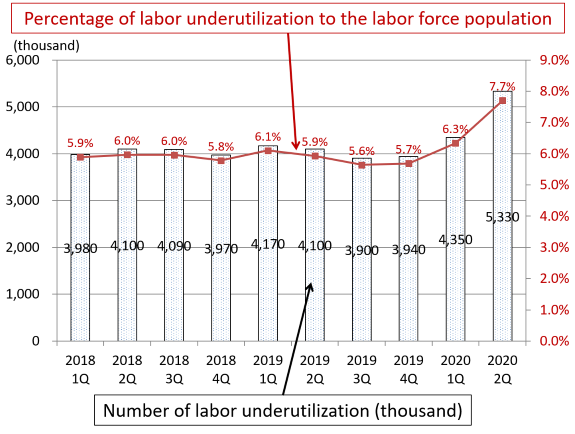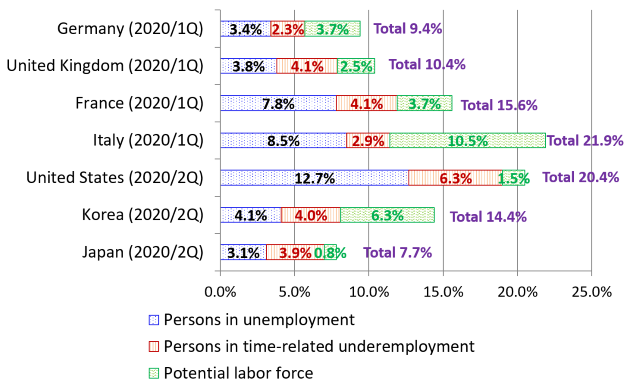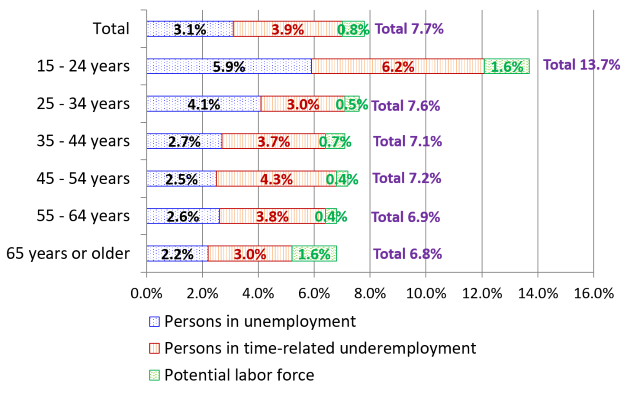Column Finance and the Social Security System 2020.09.10
【Aging, safety net and fiscal crisis in Japan】No.276: Labor underutilization is increasing due to the economic stagnation caused by COVID-19
The Ministry of Internal Affairs and Communications released survey statistics on the labor force in the second quarter of 2020 on August 11th, 2020. According to the survey results, labor underutilization, which is a concept that the International Labor Organization (ILO) adopted for labor statistics in 2013, is increasing. Until this concept was introduced, labor statistics focused on the number of employees and the number of unemployed people. However, as the number of part-time workers has increased, and employment patterns have diversified in each country, the data on employment and unemployment have become more complex. Therefore, labor underutilization statistics are now collected as an index to evaluate how much opportunity a country’s economy creates in terms of hiring people to their maximum potential.
Based on this concept, Japan’s Ministry of Internal Affairs and Communications defined people as being part of labor underutilization according to the criteria in Table 1. It is important to note the difference between completely unemployed people, which we are accustomed to, and the potential labor force, as shown in Table 1. Completely unemployed people are those who had sought a job in the week prior to the survey, whereas in the case of the potential labor force, the job-seeking period extended to one month. This means that completely unemployed people are included in the unemployment bracket; For example, in the second quarter of 2020, the 140,000 people in unemployment were composed of 1,940,000 completely unemployed people and 200,000 others.
As shown in Figure 1, the number of people counted in labor underutilization increased from 3,940,000 in the fourth quarter of 2019 to 5,330,000 in the second quarter 2020; as a percentage of the workforce population, these figures translate to a growth from 5.7% to 7.7%. However, as shown in Figure 2, the percentage in Japan is lower than that of other countries. Despite this, Figure 3 shows the percentage for Japan in the second quarter of 2020 by age group and type, where it becomes apparent that the percentage of labor underutilization for people between 15 and 24 years old is high.
Table 1 Definition of labor underutilization

Source: Ministry of Internal Affairs and Communications.
Figure 1 Labor underutilization in Japan

Source: Ministry of Internal Affairs and Communications.
Figure 2 International comparison of labor underutilization percentages compared to the labor force population

Source: Ministry of Internal Affairs and Communications.
Figure 3 Labor underutilization percentages compared to the labor force population by age group

Source: Ministry of Internal Affairs and Communications.
